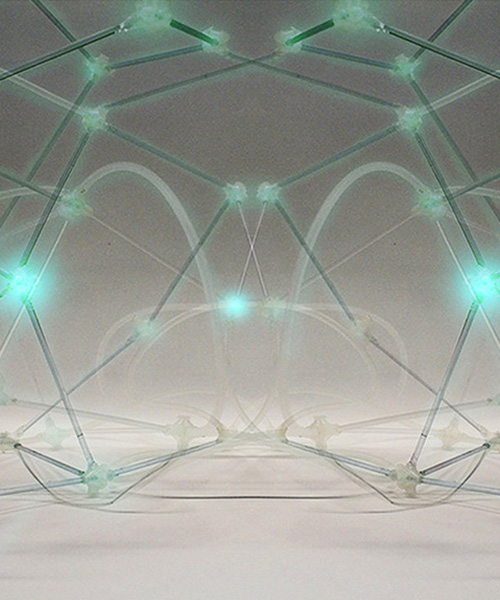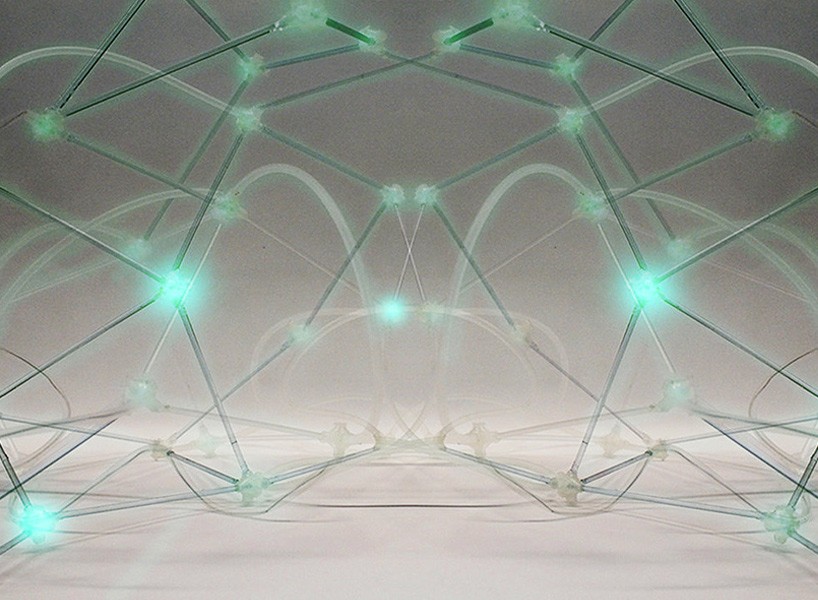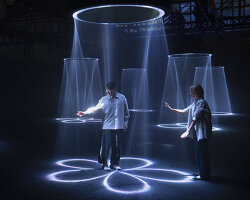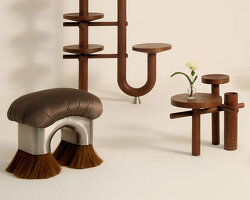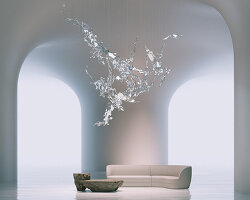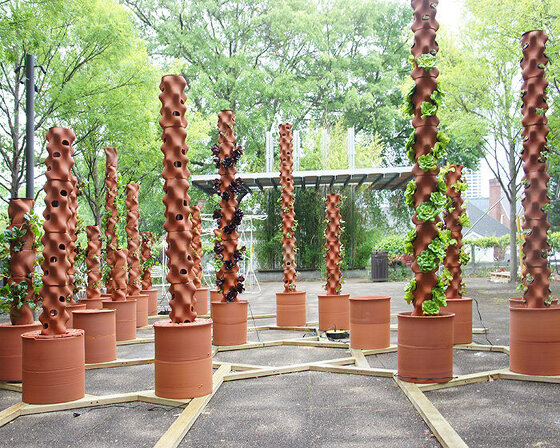what’s the next step after a millennia of technological evolution in lighting systems?
this master thesis project by alice bonicelli, 2016 graduate of interior architecture and retail design from piet zwart institute in rotterdam, explores the possibilities of illuminating future interiors by testing the light-producing properties of a bio-luminescent fungi — outside the usual confines of scientific practice. the project entitled ‘biolux’ was developed in collaboration with the department of microbiology in the university of utrecht, where the designer conducted hands-on experiments with associate professor R.A. ohm in order to investigate which medium and material could best support the life and glow of mushrooms, in the species of panellus stipticus.
during her study at piet zwart institute, alice bonicelli‘s idea of embedding live matter into lighting systems comes from the urge to push the boundaries of what is conventionally considered light and the will to experiment by blending man-made spaces and nature. the result is a light installation made of an intricate system of transparent PVC and PMMA tubes which simulate the effects of a bio-luminescent interior, turning the architectural envelope into a performative shell.
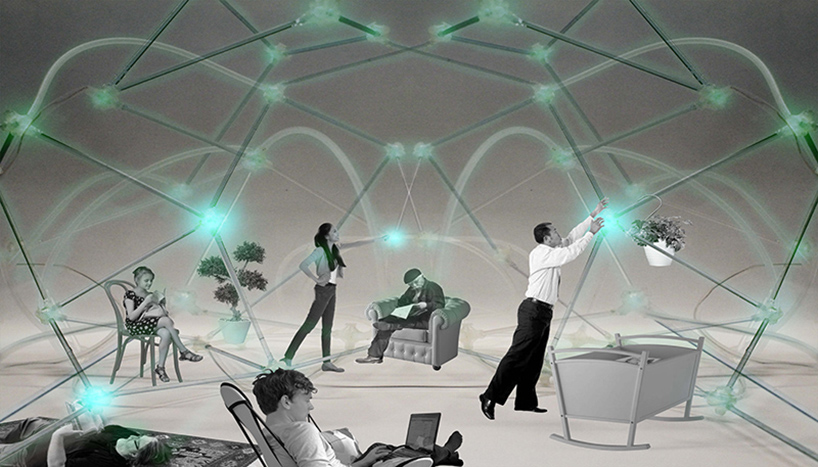
future bioluminescent interior
in the proposed interiors of the future, space, matter and light become one. the tubes that run through are filled with an ideal substance consisting of vermiculite, water, coffe grounds and sorghum. the glowing green light observed in the lab was reproduced on a larger scale with the aid of UV lamps.
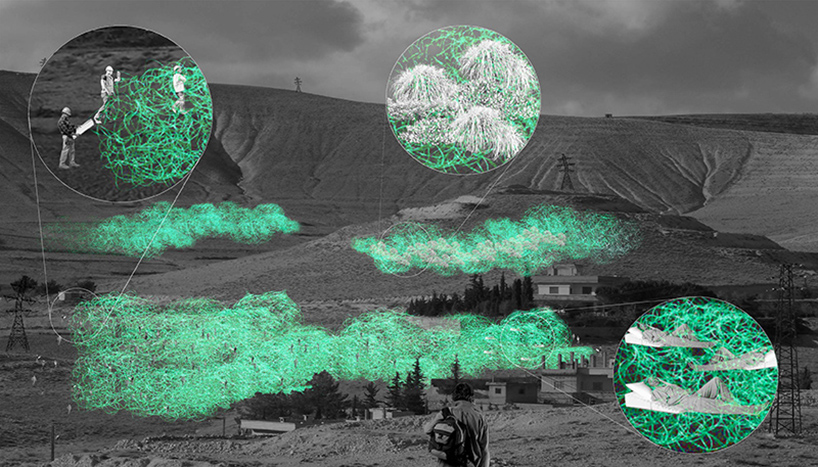
future bioluminescent dwelling
designed and 3D printed by the designer, the tubes were connected by organic plastic joints that recreate the shape of neuron cells so to allow multiple connections and potential growth of the mushrooms throughout the whole structure — finally looking like an endless glowing rhizome. the light observed in the experimental samples is still very weak and not yet suitable for extensive lighting purposes. however, the project offers one solution and possible configuration based on existing scientific research that thrives to enhance the brightness of panellus stipticus by identifying the genes responsible for the strongest glow.
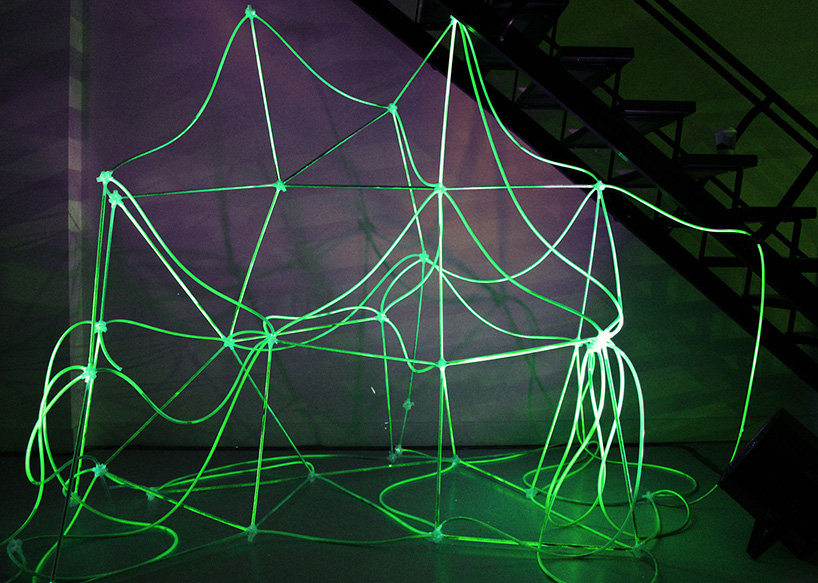
light installation – plastic tubes, substrate, UV lamps
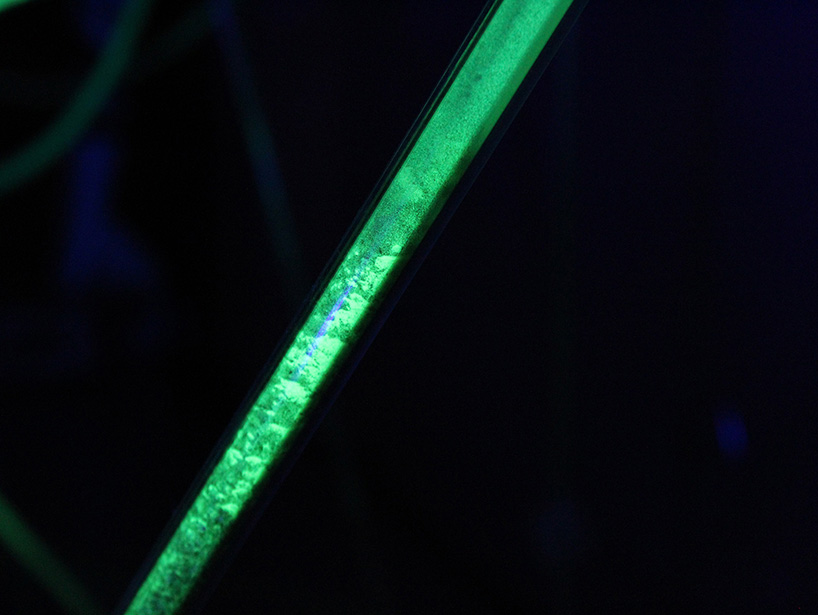
detail of glowing tube filled with panellus stipticus
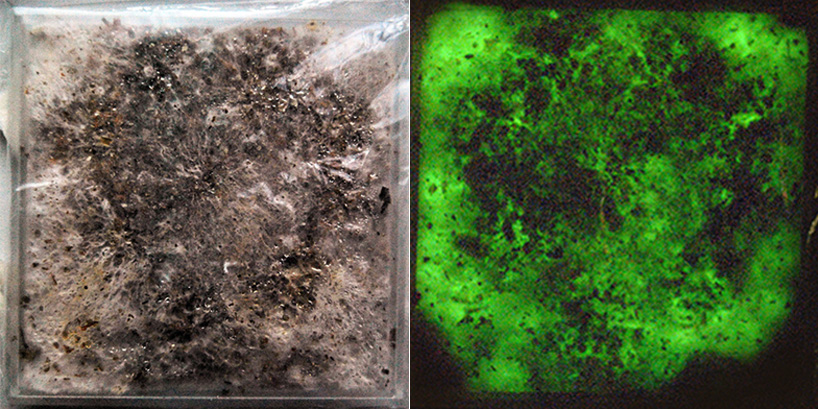
prototype filled with substrate and panellus stipticus – in daylight and darkness
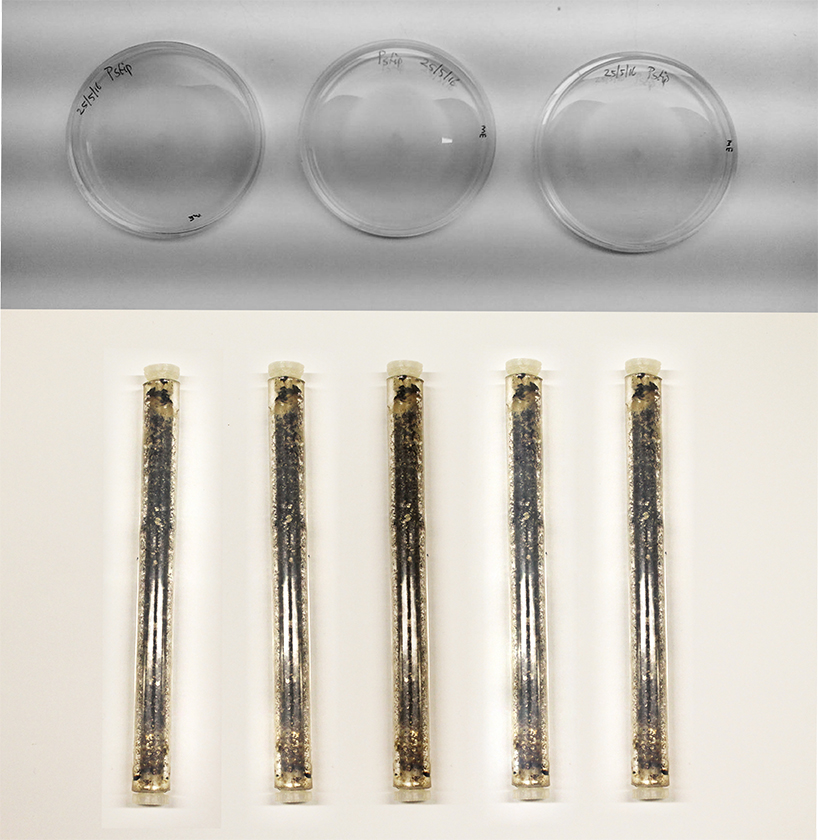
lab experiments, growing the bio-luminescent mushroom
designboom has received this project from our ‘DIY submissions‘ feature, where we welcome our readers to submit their own work for publication. see more project submissions from our readers here.
edited by: lea zeitoun | designboom
